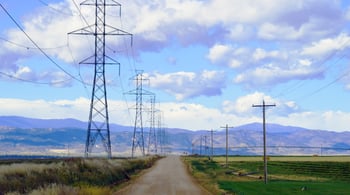Smaller-scale projects are often viewed as a harbinger of things to come, since they can be replicated faster and in greater numbers across our electric power system. I believe our second and latest project with Arizona Public Service (APS) is one of those – a 2 MW, 4-hour duration system that will take the place of rebuilding about 20 miles of transmission and distribution poles and wires – making them one of the first electricity companies in the nation to use battery-based energy storage in place of traditional infrastructure for basic grid operation.
 As many readers of this blog already know, battery-based energy storage can offer key advantages over traditional assets (wires, substations, etc.) in transmission and distribution planning – shorter lead times and incremental deployment offering more flexibility in siting, improved asset utilization and right-sizing investment costs.
As many readers of this blog already know, battery-based energy storage can offer key advantages over traditional assets (wires, substations, etc.) in transmission and distribution planning – shorter lead times and incremental deployment offering more flexibility in siting, improved asset utilization and right-sizing investment costs.
For APS, this new system will provide much-needed transmission and distribution capacity, saving them the time and cost of rebuilding lines and poles over difficult terrain. In addition, this Advancion system will provide additional benefits like voltage regulation and delivery of excess solar power, as well as the capability to add additional storage as needed, all at a similar cost.
The project is a prime example of how energy storage can address local needs in areas experiencing population growth – and associated load growth. Punkin Center is a growing rural community of 600 residents, roughly 90 minutes northeast of the urban core of downtown Phoenix. To increase power reliability for those customers, APS chose battery-based energy storage because of its faster speed of deployment, lower implementation costs, and the additional services it could offer.
 “This is the type of project that APS has been working towards for a long time,” said Scott Bordenkircher, APS’ Director of Transmission and Distribution Technology Innovation and Integration. “Our company is looking at how we can provide the greatest benefit for customers, while also laying the foundation for a sustainable approach to battery storage in the future. The Punkin Center project meets both of those goals and we look forward to working with AES on another battery project.”
“This is the type of project that APS has been working towards for a long time,” said Scott Bordenkircher, APS’ Director of Transmission and Distribution Technology Innovation and Integration. “Our company is looking at how we can provide the greatest benefit for customers, while also laying the foundation for a sustainable approach to battery storage in the future. The Punkin Center project meets both of those goals and we look forward to working with AES on another battery project.”
From our perspective, it’s the latest proof that there are certain cases where energy storage can defer investments in a variety of fundamental, single-function grid assets like wires, poles, transformers and substations, and in the process help utilities get the most value from the transmission and distribution lines they already own and use. As communities across the U.S. and elsewhere around the globe work to modernize their electric grids, utilities are beginning to recognize that energy storage enables them to think more broadly about their investment options and strategy.



















